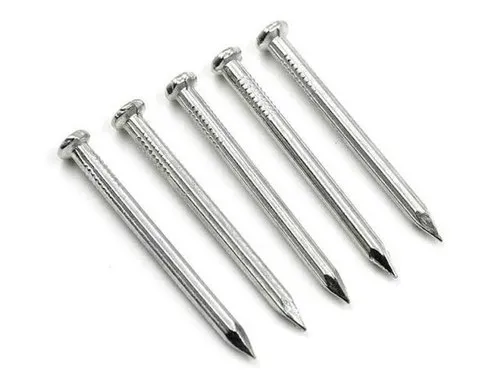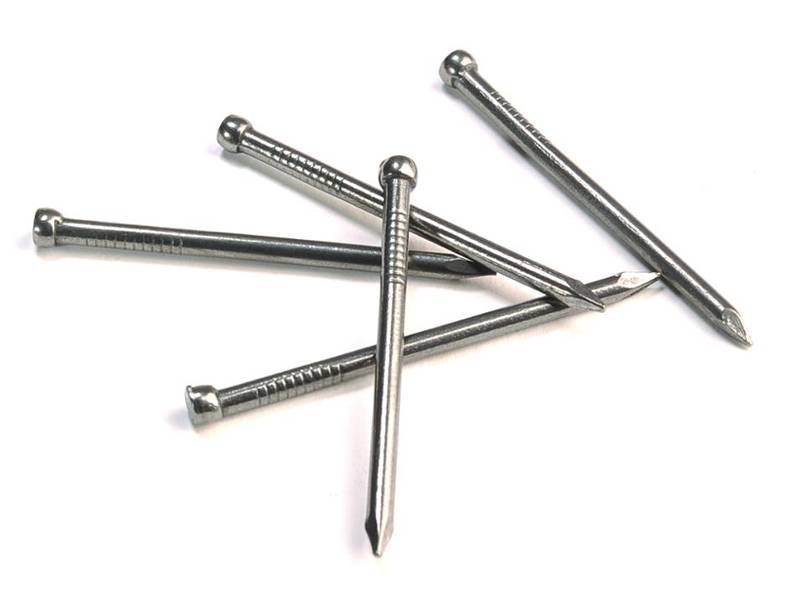A nailer drives nails faster and more easily than a hammer using pressurized air, battery capacity, or a fuel cell. You may also drive the fasteners with excellent accuracy with a nailer if you apply the proper method. While doing carpentry or woodworking jobs, the final product’s features and durability can be extremely impacted by the fasteners.
Brad nails and perfecting nails are two of the more well-known types available, and they each have various uses.
What Are Brad Nails?

Brad nails are smaller, and more fragile than other types of nails because they are usually constructed of 18-gauge wire. Their lengths vary from 5/8 to 2 inches. Their lack of a prominent head is one of their distinguishing characteristics; it enables them to be driven into wood without leaving an obvious imprint.
Uses for Brad Nails
- Trim and Molding: Brad nails are perfect for fastening small, delicate trim pieces without damaging the wood, such chair rails, baseboards, and crown molding.
- Cabinetry: They are frequently used in cabinets to fasten fragile pieces or delicate parts without causing the material to crack.
- Crafts and Hobby Projects: Brad’s nails are ideal for crafts and hobby projects like ornamental boxes or picture frames because of their modest size and subtle look.
- Paneling: Brad nails are frequently used to fasten paneling to walls or ceilings, particularly in cases where the panel is made of lightweight material.
What Are Finishing Nails?

Finishing nails, generally called finish nails, usually have a gauge of 15 to 16 and are lightly thicker than brad nails. They are assumed to be used in perfecting tasks where a strong, long-lasting grip is required but the nail’s look shouldn’t be notable.
For perfecting touches on woodworking projects, finishing nails are perfect because of their small, smooth head, which makes it simple to get them under the surface of the wood and hide them with filler.
Uses for Finishing Nails
- Baseboards and Casings: Finishing nails are commonly used to attach baseboards, door and window casings, and other types of trim that require a strong hold.
- Crown Molding: The strength of finishing nails makes them ideal for securing crown molding to walls and ceilings, ensuring that the molding stays in place over time.
- Furniture Construction: Finishing nails are often used in furniture construction, particularly in areas where a strong bond is needed, but visible nails are undesirable.
Brad Nails vs. Finishing Nails: A Detailed Comparison
Size and Gauge
Brad Nails
Brad nails are thin. They’re usually 18-gauge, which means they’re very slim. You can find them in lengths from 5/8 inch to 2 inches. These nails work best for small, delicate jobs where you don’t want to see the nail.
Finishing Nails
Finishing nails are thicker than brad nails. They come in 15- or 16-gauge sizes. You can get them in lengths from 1 inch to 3 1/2 inches. These nails are good for bigger jobs where you need a stronger hold.
Holding Power
Brad Nails
Brad nails don’t hold as strongly as finishing nails. They’re good for light work where looks matter more than strength. You shouldn’t use them for heavy things or to hold up important parts of a structure.
Finishing Nails
Finishing nails are stronger than brad nails. They can hold heavier pieces of wood together. You can use them for bigger trim work and even some structural parts of a project.
How They Look
Brad Nails
Brad nails have very small heads. Once you hammer them in, they’re hard to see. This makes them great for jobs where you want the wood to look smooth and unmarked.
Finishing Nails
Finishing nails have bigger heads than brad nails. You can see them more easily after they’re hammered in. But you can push them below the wood surface and fill the hole to hide them.
What They’re Used For
Brad Nails
Brad nails work well for small, light jobs. People use them for thin trim, small cabinets, and craft projects. They’re good when you’re working with thin or delicate wood that might split easily.
Finishing Nails
Finishing nails are more versatile. You can use them for baseboards, door frames, window frames, and building furniture. They’re the better choice when you need something stronger.
Tools You Need
Brad Nails
To use brad nails, you need a brad nailer. These tools are light and easy to use. They’re good for precise work and small projects.
Finishing Nails
For finishing nails, you use a finish nailer. These tools are bigger and stronger than brad nailers. They can be harder to use, but they’re better for bigger jobs.
Pros and Cons
Brad Nails
Pros:
- Almost invisible finish
- Reduced risk of splitting delicate wood
- Ideal for lightweight applications
- Easy to use
Cons:
- Limited holding power
- Not ideal for large projects
Finishing Nails
Pros:
- Greater holding power
- Durability
- Versatility for larger projects
- Concealable with some effort
Cons:
- More visible nail head
- Higher risk of splitting delicate wood
